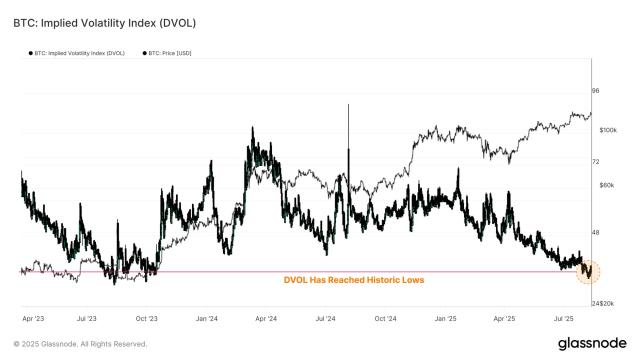In 2140, the last of the world’s 21 million Bitcoins will have been mined. At that point, the bulk of miners’ income will have disappeared. Instead, the network’s security will completely rely on transaction fees.
According to experts from OKX Singapore, JuCoin, and XBO, the timeline gives the community enough time to prepare for this moment. Bitcoin will have generated enough institutional demand and retail-driven activity to justify premium transaction fees for security. However, concerns over centralization and adequate adaptability remain.
The 2140 Challenge: A Post-Subsidy Bitcoin
For over a century, a block subsidy has secured the Bitcoin network. This reward serves as payment for miners for validating transactions made to create new Bitcoins. This subsidy has been the primary incentive for miners, ensuring the network’s security and decentralization.
However, in 2140, the last Bitcoin will be mined, and the subsidy will disappear entirely.
“When the block subsidy finally runs out… Bitcoin’s security will depend fully on transaction fees. The big question is how demand for block space will evolve after that,” OKX Singapore CEO Gracie Lin told BeInCrypto.
If Bitcoin’s demand continues to grow at the current pace, experts believe it will naturally fill in the gap left behind by the disappearance of block subsidies.
Bullish Potential: The Case for Optimism
Bitcoin’s growing utility, driven by increased demand and high-value transactions, will organically create a robust fee market capable of sustaining security over time. This, paired with the development of the Bitcoin network over time, will inherently increase the price of transaction fees.
“By 2140, Bitcoin’s role as digital infrastructure will likely be so embedded in global finance that high-value settlements naturally generate substantial fees. It’s like premium real estate; when something becomes truly scarce and essential, people pay accordingly,” Sammi Li, Co-Founder and CEO of JuCoin, explained.
A key driver behind this belief is the increasing participation of large institutions. As these entities integrate Bitcoin into their operations, they will generate consistent demand for on-chain transactions and a reliable source of revenue for miners.
The large-scale transactions from these players will be the key to a healthy fee market. Their involvement will legitimize the fee market and ensure its stability.
“Institutional treasury movements, cross-border settlements, and final settlement of large Layer 2 batches will drive consistent demand. Central bank digital currencies and corporate Bitcoin adoption will create regular, high-value transaction flows that justify premium fees,” Li added.
The infrastructure supporting the network will also naturally improve. The future development of Layer 2 solutions will be a crucial component in ensuring Bitcoin’s long-term sustainability.
How Layer 2s Strengthen the Network
Protocols like the Lightning Network are designed to address Bitcoin’s scalability limitations by processing small, frequent transactions off the main blockchain. These Layer 2s reduce congestion and fees on the main network by processing this activity off-chain.
“Layer 2 is critical. It helps scale everyday usage while keeping Bitcoin’s main chain uncluttered and valuable. In providing a user-friendly gateway, while Lightning and similar innovations make Bitcoin viable for micro and macro transactions alike, centralized exchanges will still help onboard new users and liquidity into the space,” Lior Aizik, COO at XBO, told BeInCrypto.
These solutions will even increase traffic to the Bitcoin network rather than diminish the value of its original layer.
“Layer 2s actually drive more valuable activity back to Bitcoin’s main chain, not less. Lightning channels need to open and close on-chain, and newer solutions are creating entirely new types of high-value transactions,” Li explained.
Although this optimism is defensible, the transition is not without significant risk. Its success depends on the network’s ability to generate adequate transaction fee volumes.
Will a Fee-Driven Model Undermine Security?
While many believe that Bitcoin’s enduring utility will solve the post-subsidy security challenge, others warn that the transition may come at the cost of long-term security.
If transaction fees fail to grow consistently, the financial incentive for miners could diminish, leading to a drop in the network’s hash rate. Such an event could wear down the network’s resilience.
“Bitcoin’s security budget would erode over time and weaken incentives to secure the network. That could lead to a scenario where a sizeable chunk of mining power –possibly 20-30%– goes offline, as seen during past hashrate shocks caused by squeezed profits or regulatory changes,” Lin said.
The volatility of transaction fees would also threaten Bitcoin’s decentralization.
Can Bitcoin Keep Its Decentralized Promise?
If the fee market becomes unpredictable, this could lead to a concentration of hash power and compromise a core Bitcoin tenet.
“If transaction fees aren’t sufficient to sustain smaller, independent miners, Bitcoin’s network could become more centralized—undermining one of its foundational principles,” Aizik told BeInCrypto.
A failure of the fee-driven model could have existential consequences for Bitcoin’s role in the global economy. If the network’s functionality takes a hit, so will its reputation as a reliable store of value.
“There’s a risk that Bitcoin could be seen more as a museum piece than a living ecosystem,” Aizik added.
Luckily, the Bitcoin community has 115 years to plan ahead.
Planning Ahead
Despite the potential risks, the overall sentiment from industry leaders is one of high confidence.
The consensus is that Bitcoin’s inherent design, coupled with a committed community and a growing ecosystem, will allow it to transition successfully to a purely fee-driven model.
“Markets are remarkably efficient at pricing security when the stakes are high enough. If Bitcoin remains valuable in 2140, the economics will align to protect that value. The transition timeline allows for gradual adaptation rather than sudden shock,” Li concluded.
Aizik agreed, noting that the very fact that this conversation is happening so far in advance attests to its resilience.
“The industry needs committed entities to be a part of this evolution– helping onboard the next generation of users while honoring Bitcoin’s foundational principles,” he said.
By continuing to cultivate this forward-thinking nature, the future of Bitcoin should remain in good hands.





